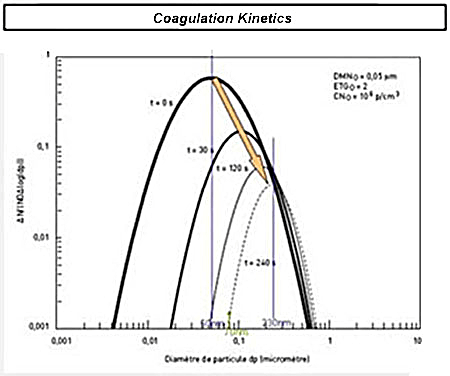
Evolution of an aerosol type (50 nm) with a high concentration (108part/cm³).
Let us imagine an atmosphere of significant initial concentration, like 107 part.cm-3, with an average diameter of 50 nm.
How fast will the particles "coagulate“, form aggregates and agglomerates? The downward arrow noted on the opposite abacus expresses that this atmosphere is transformed into 4 mn (240 sec) in an aerosol of an average diameter 230 nm. The width of the smallest "bell-curve" centered on 230 nm indicates that no more particle smaller than 70 nm exists.
In high concentrations, the stability of nanoparticles is very fragile. It is very likely that aggregation and agglomeration phenomenon's occur.


